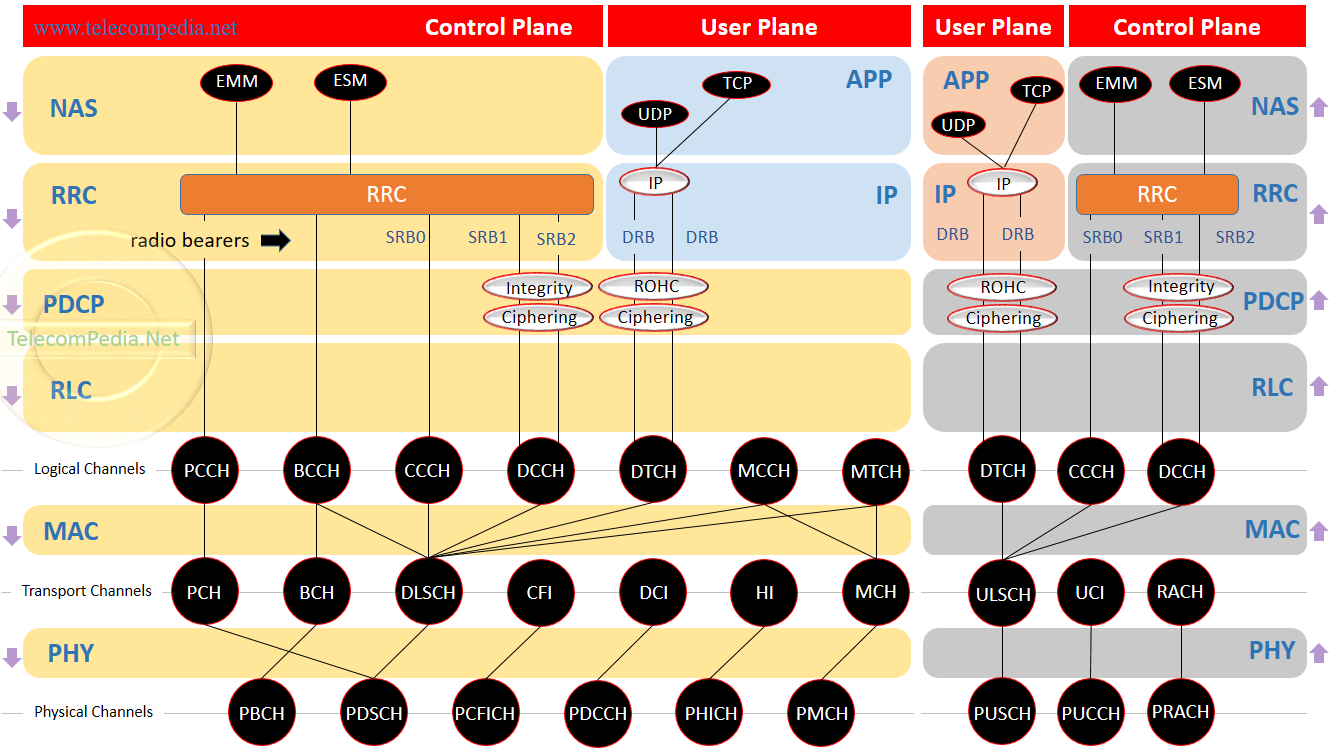On above image, we can see overview of LTE Protocol Stack. Each part of the stack has its own responsibility.
Details for these parts will be described in related pages, now let’s to understand the concept of the protocol stack with an “office condition” example.
— There is a big office building with two blocks, different stairways. One of them is used to go upstairs and other one is used for downstairs. “The blocks and stairways are shown as uplink and downlink arrow directions on the LTE Radio Protocol Stack.”
On the first floor, different office engineers are sitting and receiving the products from the customers. “This floor name is Physical Layer. The engineers are Physical Channels.”
The engineers who are sitting on the first floor, control the products and forwards to upper floor which is second floor and other office engineers are sitting here. “The second floor name is MAC Layer. The engineers are Transport Channels.”
The engineers who are sitting on the second floor, check the received product from the first floor and makes decision to send it to upper floor and to which engineer. “The upper floor is RLC Layer and engineers are Logical Channels.”
The engineers in the third floor, check the received products and sends them to upper floor where specials experts are sitting who are responsible for security and other tasks. “This is fourth floor and name is PDCP Layer.”
The experts who are sitting on the fourth floor, inspect the received products from the third floor. There are two sub-floors after the fourth floor, so the experts check the products and distribute it to send upper floors. The pure product will be send to the “User Plane” floor and the box where the product was carried will be send to the “Control Plane” .
Above simple imagination was described from eNodeB to UE as “Product Receive”, for “Product Send” you can imagine as an opposite way.
LTE Protocol Stack consists of:
• Physical Layer
• MAC Layer
• RLC Layer
• PDCP Layer
• RRC Layer
• NAS Layer
• IP Layer
• Application Layer
— RRC and NAS layers are used for user signaling processing
— IP and Application layers are used for user traffic processing

great job
I do trust all the concepts you have introduced in your post.
They’re really convincing and will certainly work. Still, the posts are too quick for newbies.
May you please extend them a bit from subsequent time? Thank you for
the post.